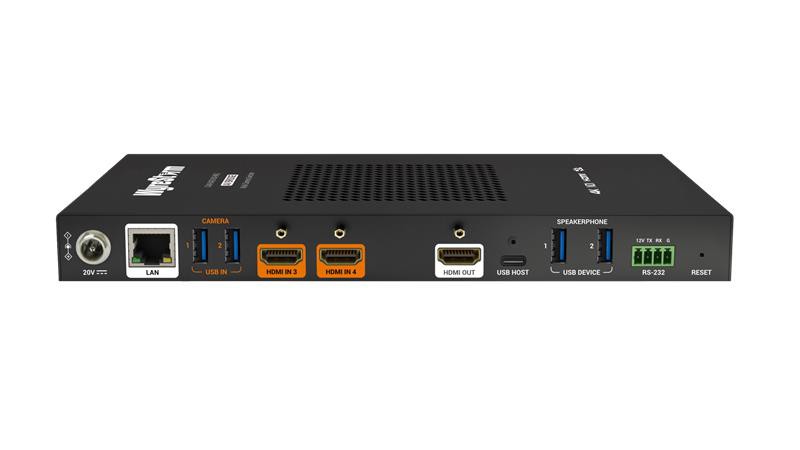How to Use Cameras

I travel all over North America working with churches and ministries on many different levels. From simple front-of-house systems to full HD broadcast systems for national ministries. Something that I see happening quite extensively in the last few years is the appearance of cameras of every size and shape, popping up in churches everywhere. Now I think that's a great thing. In the church world, whatever you can do to get people involved is great and doing whatever you can do as a church to stay in front of the tech wave is even better. Unfortunately, I don't see cameras being used well or properly at all. Now some of this is the fault of church staff members (if you’re reading this, that's probably not you) but sometimes this is the fault of the integrator or consultant working with the house of worship.
What spurred this thought was that I was sitting in a church running IMAG (image magnification, if you don't know) of a single camera, off-center of the stage. Not to mention the fact that IMAG isn't really needed in a facility that only seats 250 people and doesn't have a sight line longer then maybe 100 feet... But that's beside the point! Back to the point though, so this camera is off-center from the stage center. Now sometimes this is alright, and really won't even be noticeable. But in this particular case, there is some environmental projection at the back of the stage. So when you add this all up what you end up with is a framed camera shot of the talent and the left edge of the environmental projection right over their shoulder. It looks ridiculous.
The second issue is, this ministry doesn't have a local broadcast or a national broadcast, they have a webcast. Cool, I think webcasting is great. What's not so great is that someone sold the ministry an old outdated broadcast camera without the all-important CCU. Now is it bad to have a better-quality capture device then what your end product requires? No, not at all. Get the best capture device you can afford. Always get the highest quality equipment you can afford and sell the best product your clients can afford.
Now where my problem lies in this situation is that an audio integrator worked with this ministry on their audio system and deemed it appropriate to start recommending and designing a video system once he was done with the audio. But you see, this guy wasn't a video guy. He just had seen a little bit of pro video systems and thought he had a good handle on selling and designing video. Yeah, not so much.
So why did I tell you this wonderful little story? To help you better understand how to use cameras in house of worship projects, of course. So where do we go from here? Well, first you must ask some questions:
1. Do you need video? -- One of the hardest parts of dealing with house of worship projects is that it's a very different world then any other realm of pro AV. Nothing compares to it at all. So when you are working on a HOW project you must ask them if they need video cameras or if they just want cameras. Many churches WANT cameras because they look cool and they think it's very high tech. But you really need to drill through that. Does your client need video because they want to broadcast or webcast or their facility is large enough to require the use of IMAG? Maybe they need video for in-house reasons or for multi-campus reasons. You need to know that.
2. What do you want to do with it? -- We kinda covered this in the first question, but you need to know what the ministry needs to do with their video and what they want to. One of the keys, in any area of tech, but definitely in video, you must plan to future-proof. So when you ask what they want to do with it, you must also ask what they may want to do with it in five years. You need to know if they plan to broadcast, webcast, IMAG, multi-site, CCTV thoughout their current facility, etc. Do they want to make service DVDs available to their congregation? What do they plan to do farther in the future?
A daily selection of features, industry news, and analysis for AV/IT professionals. Sign up below.
3. Where is your audience? -- Part of this is dependent on the previous question. You must know where your audience is and how they will consume their product. If they plan to broadcast and want to capture in HD but their local stations don't even accept any HD content let alone broadcast it... Maybe you should know that as you're trying to design their system. If they want to webcast to a very tech-savvy type of end user... Maybe they really do need to be using an HD solution.
4. What's your budget? -- It doesn't matter what type of tech you’re selling or working with, budget will make or break your project. I've been working with churches of every size for over 15 years and I can tell you, they have NO IDEA how much video will cost. Sure, audio is expensive. Lighting can really set you back. But video, oh man, video will mess you up. It doesn't matter the size or complexity of your system, it will blow the budget in their head to pieces. You really must spend some serious time working on budget points to make sure you can provide a viable solution for them.
5. What's your space? -- Space is more important then most of the technical aspects of any video system. You need to physically look at what you’re working with within the facility before you specify any piece of gear. You need to look at the sight lines, stage design, lighting, projection systems, etc. Space will dictate which lenses are required and cable lengths. You have to look at the space.

